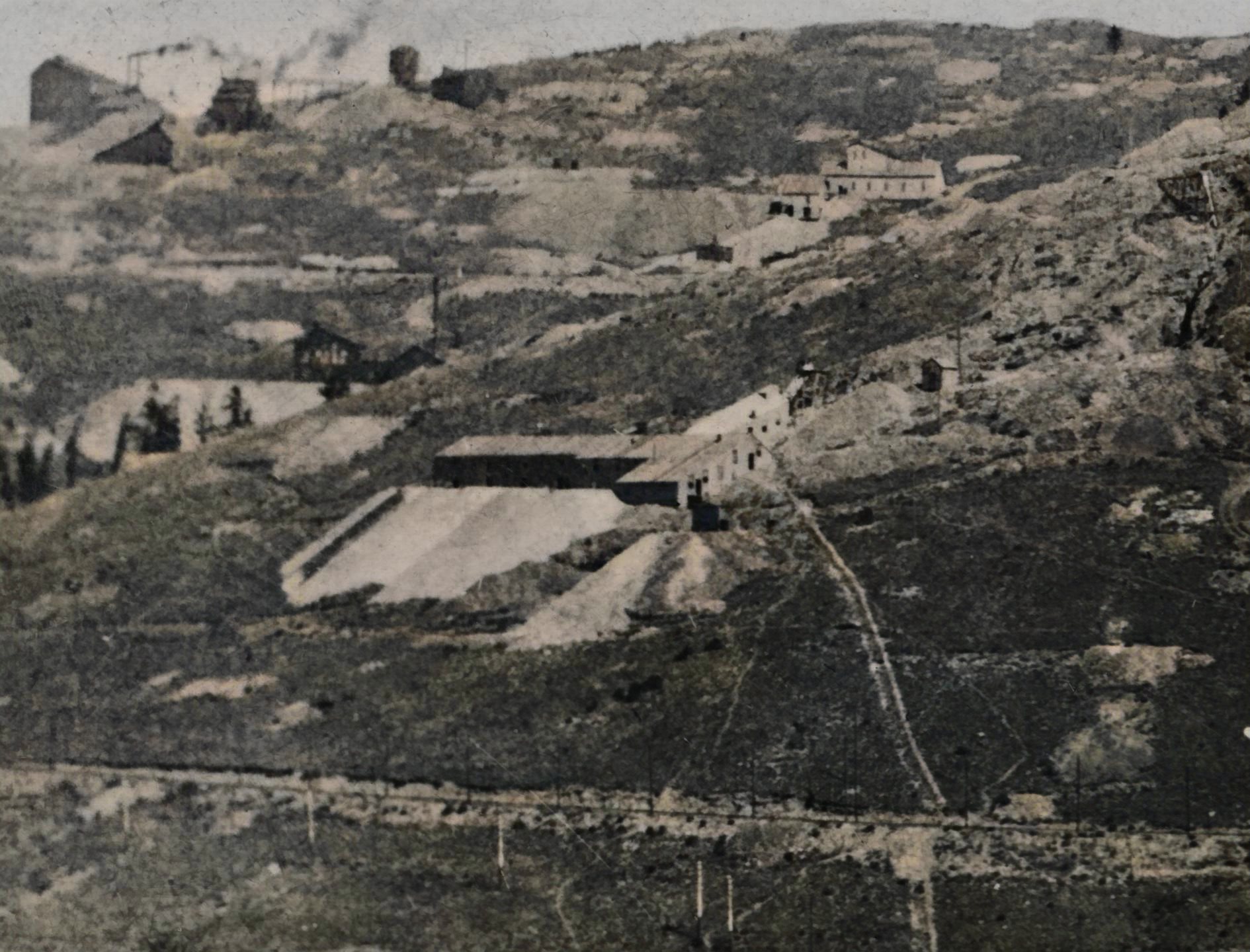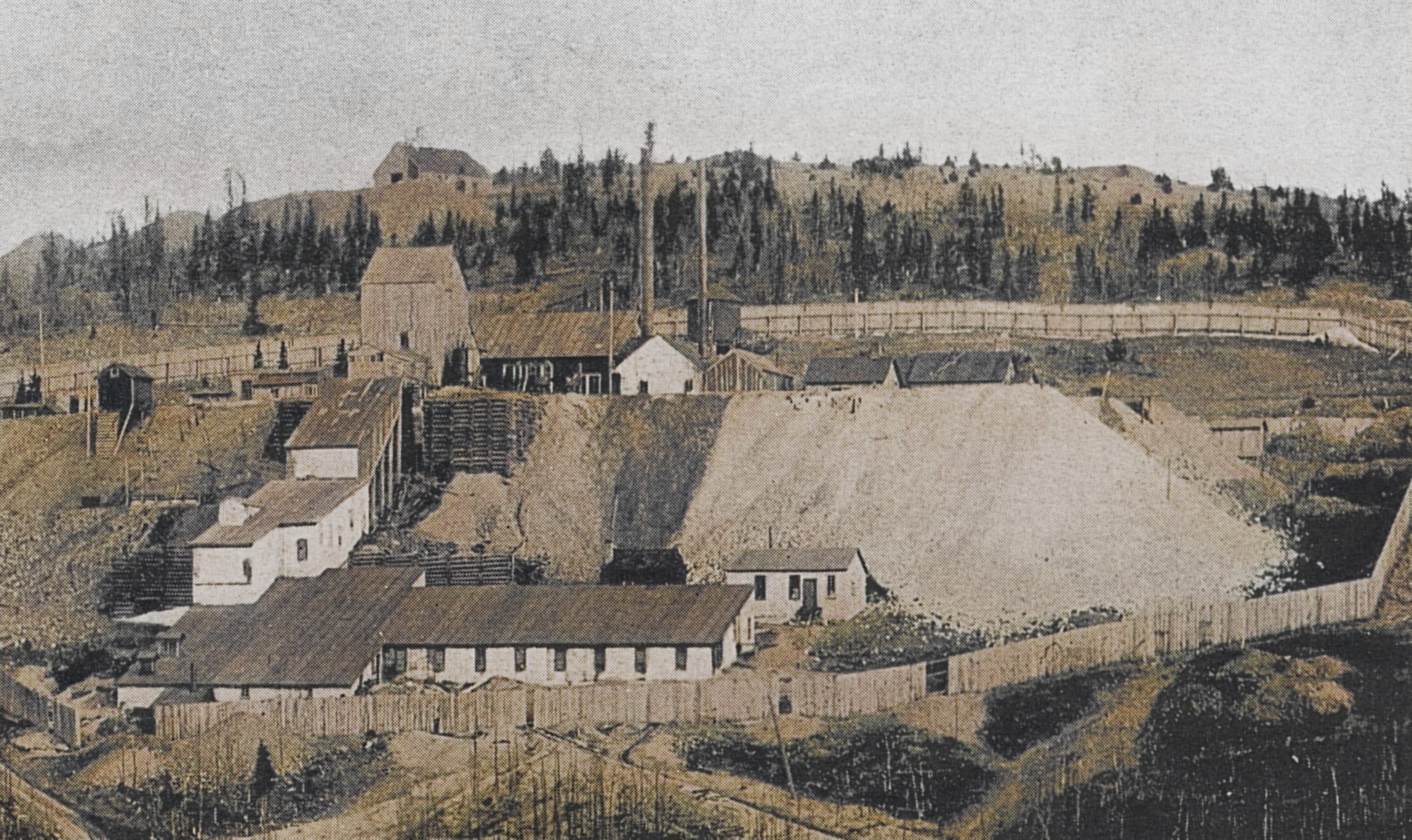-> My Collection; No source to show as I've not shared the Mining Journal as an album.
But, here is a link to first page on Hathi Trust Digital Library website.
Source had no images, so I used some images from my collection.
Since the last report of the condition of cyaniding in the Cripple Creek district given in Mining Reporter (September 1, 1904), many changes have taken place as regards the mills in active operation, but comparatively little in the general milling practice.
The year has been marked by exceptional activity in mill construction but closes with but a slight increase of tonnage over that reported a year ago. Only two mills, the Homestake and the R. E. A. and A., were then running with an approximate capacity of 300 tons per day.
Four mills are now in active operation, but the aggregate tonnage does not exceed 375 tons per day.
During the year the Homestake company completed the erection of a new mill with a rated capacity of 1,000 tons and started to treat ore about the latter part of February. The mill, however, failed to meet the expectations of the promoters and after a few months' unsatisfactory run, has been closed down with uncertain prospects of resuming operations.
Although the crushing was changed from four mesh at the start to a screen of three-eighths inch opening for the finished product, yet the capacity expected failed to develop. It is the opinion of well-informed mill men that while the crushing machinery is ample for a capacity of 1,000 tons per day to a three-eighths inch mesh, the design of the plant has been so poor as to make the capacity impossible without material changes.
A description of the mill was given in the E. and M. J. of June 8th and will not here be repeated. The strength of cyanide solution used was there given through mistake as a little over one-half pound per ton, where it should have been a little over 0,5%, or about 1.3 pounds per ton. This is the lowest strength used by any mill in the district, or as far as the author is aware, the lowest used by any cyanide mill in the United States.
The value of the ore treated will not admit of a large loss of cyanide, and, judging from results so far obtained, it seems doubtful if their low grade ore can be treated successfully.
The Old Homestake mill of 200 tons' capacity has been partially dismantled, but it is reported that it is to be remodeled and used as a custom mill. We have, however, no authority for this statement.
The Gillette mill, which was just completed a year ago, has been in intermittent operation, but is now closed down. It is reported that the installation of roasters is contemplated. Straight cyanide solution has been used instead of bromo cyanide, as was at first proposed by the former superintendent.

Cropped Gold Hill View with Anaconda Mill; Rittenhouse; E. Porter Gold King; Lexington; Anchoria-Leland Mines
The mill of King and Craig, above the town of Anaconda, did not commence milling ore until near the middle of the winter, but has since been in steady operation, apparently with good success.
All the ore treated at present is taken from near the surface.
The R. E. A. and A. mill, usually called the Wild Horse mill, is the only mill that has been running steadily throughout the year. It has been running principally upon dump material from the old Wild Horse shaft, but has also derived part of its tonnage from the mine.
Ore from the 1,000-foot level has been successfully treated.
The Los Angeles mill of the Exposition Mining and Leasing Company has just started with two leaching tanks of 150 tons' capacity, with the expectation of putting in a third tank of the same size.
Ore is being milled at present at the rate of about forty tons per day, the ore being taken from the second and third levels of the mine. The ore at this depth is not entirely oxidized, although the main portion is.
The mill has not been running long enough to give any figures on extraction, etc.
The Lois mill, on Copper mountain, has resumed operations under a new company, after being closed down the greater part of the year.
An interesting departure from the ordinary practice in the district is presented by the Pony Gulch mill, where it is proposed to crush in tube mills to 100 mesh and agitate by paddles in ten-ton tanks. The mill has not yet started operations.
The data of the different mills is presented in a condensed form in the following table. The table is incomplete, but is as near so as we have been able to get the figures. It will be noted that the size of crushing outside of the Pony Gulch mill is even coarser than that reported a year ago, when six and eight mesh were the common products.
Neither does the mesh given actually represent the size of the finished product as in most of the mills much coarser rock is allowed to go to the tanks without screening.
| Mill | Lois Mill. | King & Craig Anaconda Mill. |
Los Angeles Mill. |
R. E. A. and A. Wild Horse Mill. |
Homestake Mill. |
Gillett Mill. |
| Capacity of mill | 75 | 150 | 40 | 90 | 1,000 | 130 |
| Number tanks | 4 | 6 | 2 | 4 | 6 | 6 |
| Dimensions of tanks | 6x18 | vary | 5x30 | 6x25 | 10x50 | |
| Approximate capacity | 75 | 100 | 150 | 90 | 750 | 130 |
| Strength of strong solution | 4 lbs. | not given | 5 lbs. | 1.3 lbs. | ||
| Loss of KCN per ton of ore | ¼ lb. | not given | ¾ lb. | |||
| Value of ore treated | $3.50 | $6.00 | $5.50 | $4.50 | $1.50 | |
| Tailings assay | 0.45 | 0.40 | 0.65 | 0.20 | ||
| Length of treatment | 70 hrs. | 72 hrs. | 72 hrs. | |||
| Cost of mining and milling | $1.50 | $0.75 | ||||
| Crushing mesh | 5 | 5 | 4 | 5 | 2 | 8 |
| Lime used per ton | 4 lbs. | 2½ lbs. |
As a rule the nature of the ore in the district does not admit of cyanidation without roasting, to any great depth, but an area including portions of Bull, Ironclad and Globe hills seems to be an exception to the general rule.
The Wild Horse on the northwestern slope of Bull hill, has oxidized ore down to the 1,000-foot level and even to some extent below.
Outside of the mills given in the table, several others are being built or are in contemplation. One of thirty tons' capacity is being erected between Midway and Anaconda, while the old Midland sampler is being rearranged to serve as a custom mill by Messrs. Hamilton and Mayfield of Victor.
Mr. P. Argall has been making an examination of the Stratton estate and, we understand, has reported favorably to the company, but we know of no definite action upon the matter having as yet been taken.

